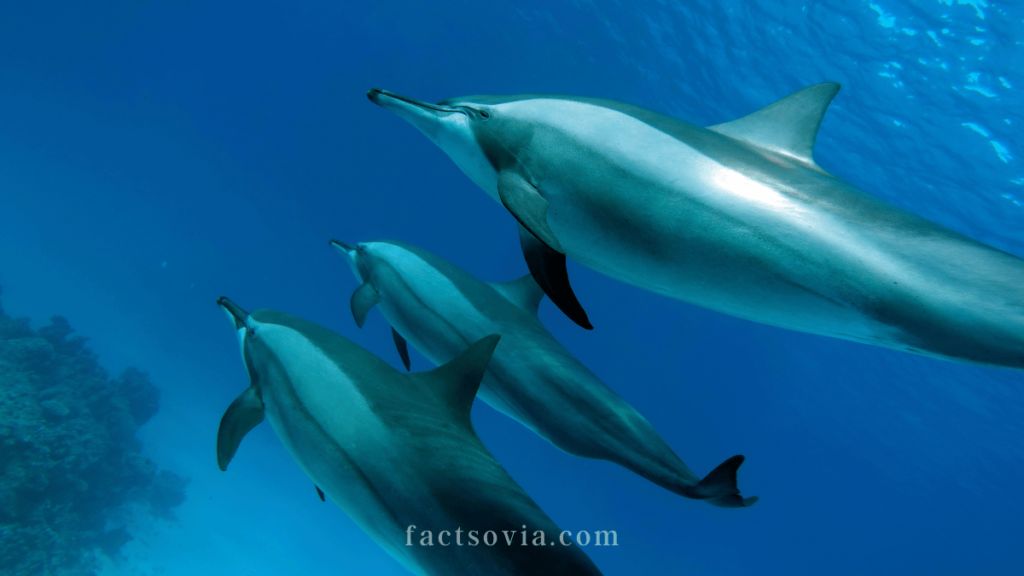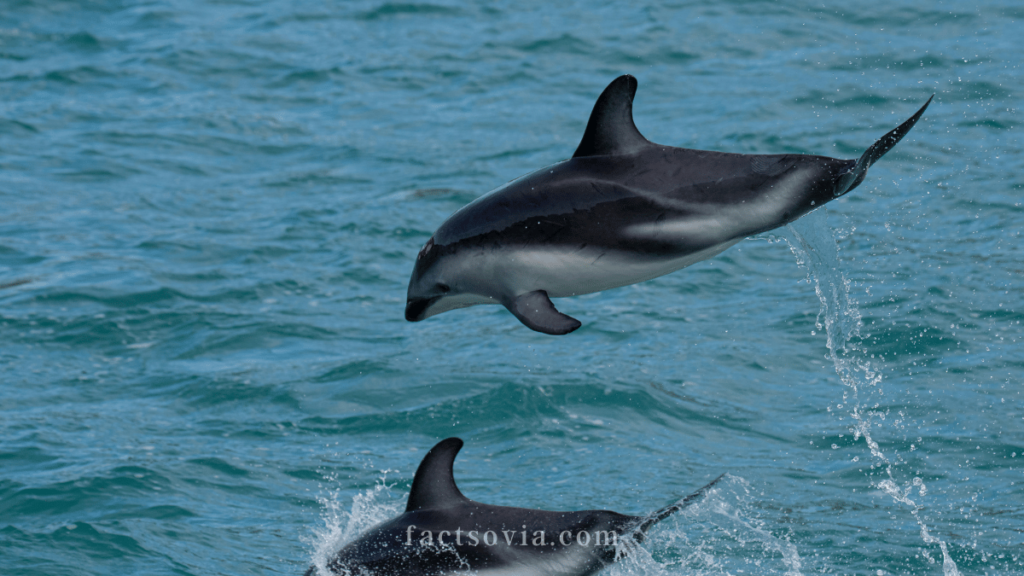We use affiliate links to run our site. When you buy through links on our site, we may earn an affiliate commission, without any added cost to you. Learn more
Ah, dolphins! These majestic creatures never cease to amaze us with their intelligence, playfulness, and their unique way of communicating with each other. They are certainly one of the most popular animals in the world, and for good reasons! But have you ever wondered how dolphins mate?
Since these marine animals are famous for their incredible acrobatic skills and social behavior, their reproductive habits can be quite intriguing and fascinating. Many mysteries still swirl around how these creatures find mates and raise their young.
In this blog post, we’re going to explore the secret lives of dolphins and answer the question you’ve been dying to know: how do dolphins mate? How do dolphins select their partners? Why do they form intricate groups and bonds? How do dolphin calves develop in the safety of the open ocean?
Get ready to dive into the wild world of dolphin courtship, reproduction, and family life.
How Dolphins Mate
Dolphins form complex social groups and hierarchies. Unlike species that mate for life, dolphins are promiscuous and both males and females will have multiple mates throughout their lifetime.
This is facilitated by the fission-fusion structure of dolphin pods. Pods continually merge and split up, allowing dolphins exposure to new potential mates.
Male dolphin bonds tend to be strong and enduring. Young males form tight bachelor groups, often staying together for years. Relationships between females are more complex and dynamic.
Females spend more time apart and have flexible associations with each other. This social structure allows dolphins to mate outside their immediate pod with less risk of inbreeding.
Courtship and Copulation
Courting and mating behaviors in dolphins involve various displays and vocalizations. When ready to mate, a male will approach a female while swimming erratically.
He makes fast turns and zig-zags next to the female. The male also performs open-mouth displays, revealing his teeth. This frequent gaping is thought to show the male’s fitness.
Another common courting behavior is called s-posturing. The male and female swim belly to belly, rubbing against each other. One of the dolphins may also present their genital region to the other. These s-postures are an important part of dolphin courtship.
During mating, the actual copulation is often difficult to observe directly. It generally occurs belly to belly as the dolphins sink down together below the surface briefly.
High-pitched vocalizations are common during and after mating. Some mating takes place within core alliances of 2-3 males, where the males take turns copulating with a female.
These courtship rituals and mating events serve important social functions beyond reproduction. The interactions reinforce bonds, reduce stress through pleasure and play, and establish dominance hierarchies.
Open-mouth displays and s-posturing are also used in aggression and conflict resolution. Overall, these behaviors are key to dolphin communication and sociability.
Do Dolphins Lay Eggs? The Surprising Truth About Dolphin Reproduction
Maturity Matters
Dolphins reach sexual maturity somewhere between 7-12 years for females and 10-15 years for males. Physical size, not actual age, is the determining factor for the onset of maturity. Dolphins must reach adequate length and weight before becoming sexually active.
For bottlenose dolphins, the average length at sexual maturity is about 2.3 m (7.5 ft) for females and 2.6 m (8.5 ft) for males. Different dolphin species vary in their size and growth rate, impacting their maturation rate. The large brains and slow growth of dolphins necessitate their lengthy path to adulthood.
Once sexually mature, females ovulate and mate year-round. They have no distinct breeding season and can give birth at any time of year. Males also remain sexually fertile all year once mature.
This continuous fertility and promiscuous mating system relates to the complex structure of dolphin pods. With fluid pod membership, dolphins have evolved to be able to reproduce throughout the year as opportunities arise.

Dolphin Sexual Selection
When choosing mates, dolphins exhibit selective pressures similar to many species. Females tend to be more selective, while males focus on maximizing mating opportunities.
For males, size, strength, and dominance establish access to females for mating. Displays of speed, agility, and advanced cognitive abilities may also play a role in female selection of males.
Characteristics preferred by female dolphins are generally linked to reproductive fitness. Traits like overall body condition, strong jawline structure, and complex vocalizations indicate male quality.
A male’s ability to hunt, forage, and survive efficiently improves offspring chances. Females analyze many aspects of potential mates.
Behaviors like the courtship displays described earlier give dolphins the chance to assess each other. The male’s impressive zig-zagging and open mouth gaping demonstrates his strength and health during courtship.
The frequency of mating acts between a pair also strengthens social bonds critical for calf rearing. Overall, dolphins exhibit a sophisticated level of sexual selection and mate choice.
Dolphin Pregnancy and Family Structure
After mating, the gestation period for dolphins is approximately 12 months. When the time comes for birth, the newborn dolphin calves emerge tail first to minimize drowning risk.
The calves are born with their dorsal fins folded down and their tail flukes curled inward. These structures firm up within 24-48 hours, allowing the calves to start swimming properly.
Dolphin infants are primarily grayish-brown in color, unlike the more pronounced gray on adults. They are typically about 1 m (3 ft) long and weigh less than 30 kg (66 lbs) at birth.
Calves nurse frequently on dolphin milk for one to two years as they grow. Dolphin milk has a high-fat content to rapidly build up the calf’s blubber layer for warmth and energy storage.
Normally, female dolphins give birth to a single calf at a time. Carrying and raising one offspring is already highly demanding energetically.
The extensive maternal investment required makes multiple simultaneous births rare. Additionally, young dolphins take three to eight years to fully separate from their mothers. The long period of maternal care limits the annual calving rate.
Paternal investment is minimal for dolphins. Males play little role in calf rearing, leaving females solely responsible.
Some researchers believe fathers and sons may have slightly stronger bonds than other adult-juvenile pairs. But in general, mothers are the primary caregivers to calves.
The fluid structure of dolphin pods allows males to mate without dedicating resources to their offspring.

Some Key Points About Dolphin Reproduction
- Dolphins are not monogamous and do not typically mate for life. They live in fission-fusion societies, where pods are constantly changing.
- Bonds between males are strong and enduring, while females have more complex and less stable bonds.
- Courtship and copulation behaviors involve open-mouth displays, s-posturing, erratic swimming, and vocalizations. These interactions are important for social bonds, stress reduction, conflict resolution, play, and dominance establishment.
- Sexual maturity varies between 7-12 years for females and 10-15 years for males. Maturity is based on size, not age.
- Mate selection is influenced by phenotypic and reproductive characteristics. Females are selective based on mate fitness and reproductive potential.
- Mating behaviors like courtship displays promote breeding pairs and pair bonds.
- The gestation period is about 12 months, and calves are born tail first. Calves are born with dorsal fins flat and flukes curled, which change within 24-48 hours.
- Normally, only one offspring is born due to the extensive maternal care required. Paternal investment is minimal, and maternal care is primary in calf rearing.
What Do Dolphins Eat? A Closer Look At Dolphin Diet.
Final Thoughts:
So there you have it, folks – the secret lives of dolphins and how they mate. While it may not be as romantic as we humans like to portray it, there is no denying that dolphins have a fascinating and unique way of reproducing.
Their social behavior, courting rituals, and acrobatics only add to their charm and mystique. As animal lovers, it’s important to continue learning about the lives of these incredible creatures and appreciate the wonders of nature that surround us.
Don’t forget to share this article with fellow dolphin lovers! Dig deeper into marine mammal behaviors by exploring the related articles on our site.
Amazon and the Amazon logo are trademarks of Amazon.com, Inc, or its affiliates.
